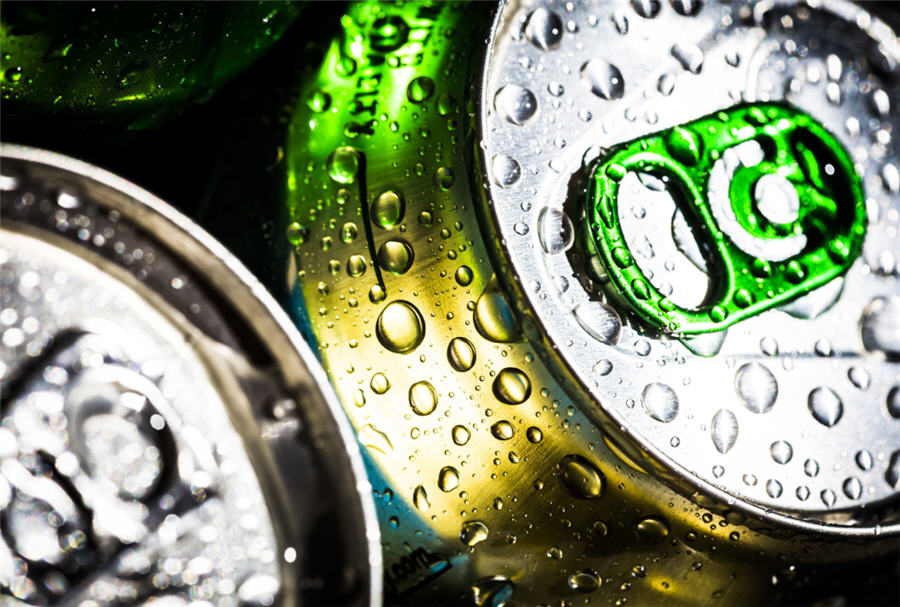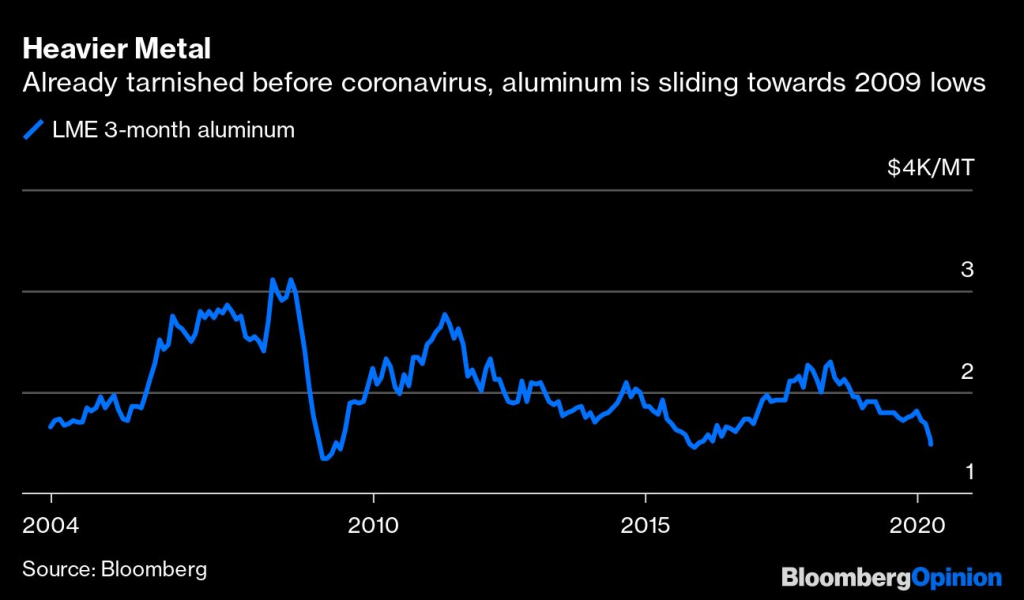
Aluminum isn’t the worst-performing base metal this year, an honor that goes to copper. Yet that’s only because it had less far to fall: Demand was ailing well before the coronavirus forced some three billion people to stay home.
Add the near-total shutdown of the world’s auto and aviation industry, crunching more than a third of demand, and the lightweight metal is fast heading for levels last seen during the global financial crisis.
That should translate into some of the mining industry’s deepest cuts as the pandemic forces producers such as Alcoa Corp. and Rio Tinto Group to make long-overdue decisions.
Aluminum is a serial underperformer, having racked up the biggest real losses for any base metal since 1913, according to Bloomberg Intelligence. Demand has slowed for a decade, and a surplus was expected this year even before the current crisis. Prices have declined for eight consecutive weeks to below $1,500 per metric ton. That’s made most of the world’s production unprofitable.

The metal has never been good at responding fast to a changing market. That’s partly because it’s inexpensive to mine the raw material bauxite. At the same time, smelters that produce aluminum metal from its oxide are slow and expensive owing to fixed costs such as power.
As a result, the industry is still working through the stockpile accumulated during the last crisis. In this context, it’s less surprising that China’s aluminum production increased in the first two months of the year.
Aluminum is a serial underperformer, having racked up the biggest real losses for any base metal since 1913
The scale and speed of the demand drop caused by the coronavirus will test the industry’s elasticity. Aircraft makers are pondering production cuts, while automakers have shut down from Japan to Germany.
The premium paid by Japanese buyers over the London Metal Exchange price is at its lowest in over three years. Car sales in locked-down economies have dropped by around 80%. Other sources of demand, like machinery, have been little better. While shoppers have hoarded canned food, this accounts for a small fraction of aluminum usage.
Analysts at BMO LLC estimated late last month that worldwide primary aluminum demand could fall 6% in 2020 from a year earlier — similar to 2008, but larger in absolute volume terms.
That’s not the steepest estimate out there, yet they suggest it already entails an unsustainable surplus of 4.2 million tons, roughly 5% of global demand.
Aluminum giants cut back during the global financial crisis, and a few years later in 2015, when cheap Chinese metal flooded the market. China won’t help much to soften the blow this year, even when the full extent of Beijing’s stimulus plan is unveiled. In 2009, when consumption dropped 17% outside China, it rose 15% inside the country, according to a Boston Consulting Group report. This time, even Chinese appetite could take years to recover fully.
China won’t help much to soften the blow this year, even when the full extent of Beijing’s stimulus plan is unveiled
There are some welcome signs of realism. Norsk Hydro ASA said last week it would postpone the restart of its Husnes plant. Analysts at CRU Group estimate some 365,000 tons of Chinese capacity has already been taken out.
More should be on the way, even if low-cost production from the likes of China Hongqiao Group Ltd. is spared: Russian giant United Co. Rusal estimated in mid-March that at prices below 13,000 yuan ($1,830) per metric ton, more than a quarter of China’s smelters, equivalent to 10 million tons of annual capacity, were losing money. Less environmentally friendly operations will suffer disproportionately.
Rio Tinto, meanwhile, had already been reviewing its Tiwai Point smelter in New Zealand and its ISAL smelter in Iceland, and now needs to think hard about the capital allocated to its least profitable division.
All of those cuts and more will be needed, especially if demand weakness lingers. BMO forecasts 4.2 million tons per year of idled capacity by the third quarter, rising to 10 million tons by 2025. There are plenty of unknowns, from how long the downturn lasts to the level of demand from traders seeking to bet on stronger markets down the road. For now, absent a significant reduction to supply, it’s hard to see anything but a dim future.
(By Clara Ferreira Marques)
Comments